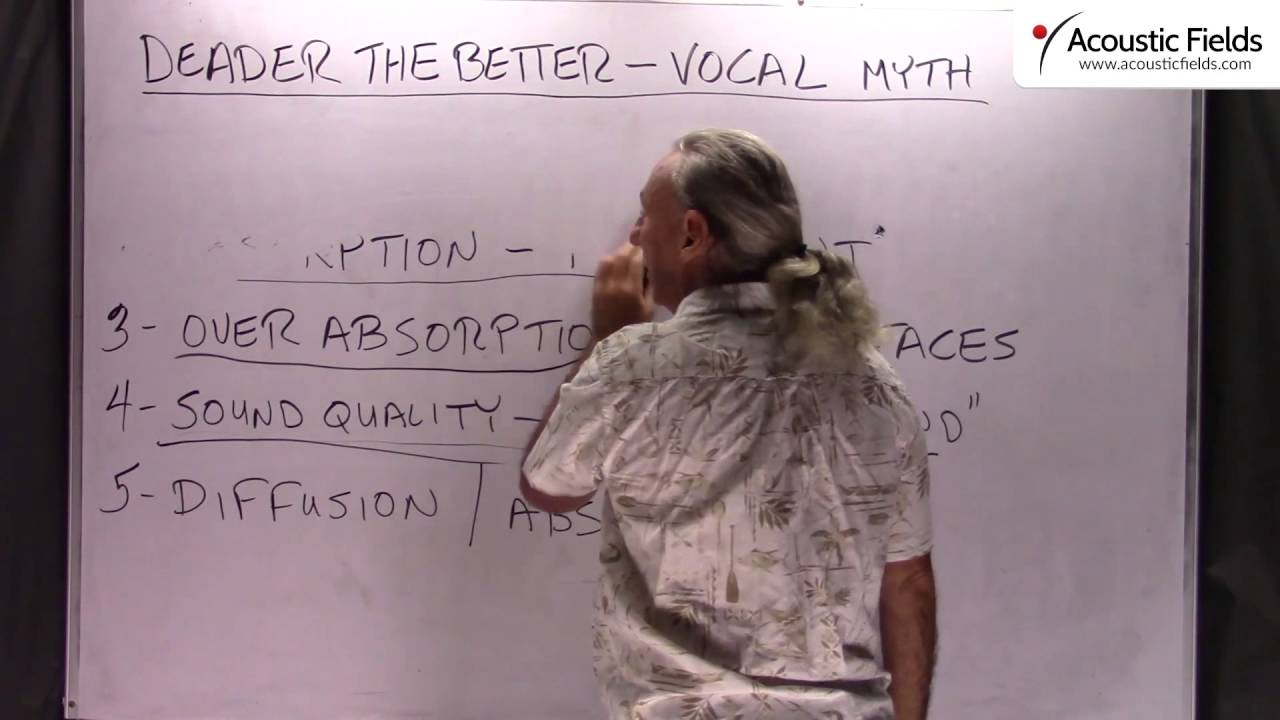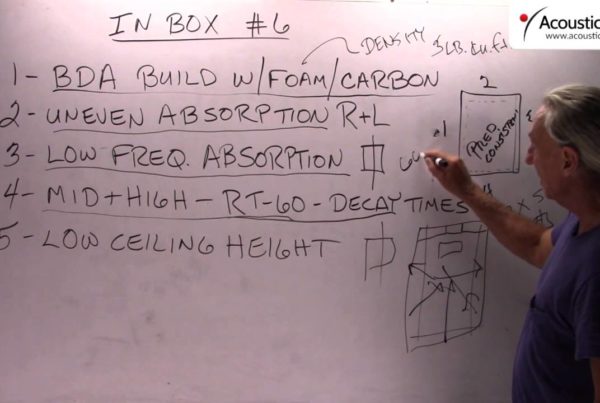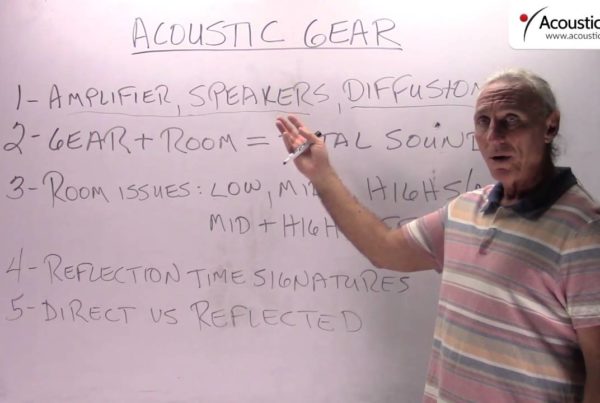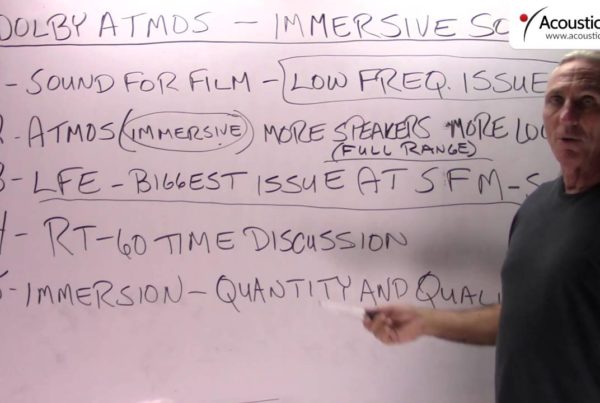Today we’re going to talk about vocal rooms. A lot of times they’re called vocal booths. I’d like to get away from this word because booths implies a really small area and with a small area with close boundary surfaces and small volume you get small sound.
And if you listen to today’s vocals in recordings you can hear that. And to me it’s just horrible. It’s life draining, it takes the essence out of the voice. And the old school way of putting people in closets and covering them with foam are over. There’s going to be a new way of achieving much better quality with your vocals. We’re going to talk a little bit about that now.
So it’s vocal rooms, not booth. Let’s get the terminology changed. We build vocal rooms, we don’t build vocal booths, it’s not something I’m interested in doing. They have minimum size requirements for the number of people that you’re going to have in the room doing the voice recording.
So absorption has been the common treatment and technology that we’ve used over the years. Obviously because the room is small, you want to minimize the reflections and slow the time signature down on those reflections. So absorption has been the common treatment.
But if you listen to vocals today you’re going to hear that real closed kind of a boxy sound, you know, you get when you get close boundary surfaces next to voice and then when you spread those boundary surfaces out you can hear more openness. But when you bring the boundary surfaces close you can definitely hear the difference.
So we want to get back vocal rooms not booths and we want to get rid of over-absorption. That’s our killer. So how do we do that? We already talked about #4 so we won’t talk about that one anymore.
Diffusion and absorption is the common one. Now let’s talk about some ways to set diffusion and absorption up in the room to get you that really open sound and that real defined, separated sound. So if we have our room here and we put diffusion along the front wall and we put our microphone here and we put our singer here or vocals here so that everything is pointed in this direction. That’s one way.
Now, obviously each diffuser has a prime sequence. So we have to calculate which sequence we’re going to use because we know each diffuser has a frequency response, okay? And we want to make sure that the frequency response of the diffusion that we’re using in the room, one, works with the distance in the room and secondly, works with the male or female voice. I think we can just limit it to male and female for now. Dogs, cats, pets, other things like that we’ll work on later. But so we have to calculate this.
Now, a lot of guys are using both diffusion on the front and the rear wall now. We’ve got some engineers that are doing that. So you’re going to get a diffuse surface on the rear wall. We’re still using absorption on the sides. We’re still using absorption on the sidewall so that’s been the common setup right now.
Now, what we do with this situation is we make the diffusers portable. So you can move them in and out. So you can vary the amount of diffusion that you add or subtract from your presentation. So standing or sitting, both of these systems apply. So we want to use diffusion and absorption in our vocal rooms to get away from that boxy sound and open it up, give it more separation, definition, articulation and in my opinion intelligibility.








The discussion on ductwork noise transmission from Acoustic Fields highlights crucial aspects of HVAC system acoustics. The movement of air…
Great build plans. thank you Denis
You must use absorption. Never place a chair against a wall.
A friend and I built several diffusors using these plans and they turned out absolutely beautiful. Very good instructions and…